July 1915
The names of the 20th Honvéd and the 17th Joint Divisions can best be associated with the defence of the southern section of the Italian front, the Karst Plateau. These troops defended almost without interruption the north side of the Karst, the municipality of San Martino, and the area of Mount San Michele. The Italians were also active on the front section south of them. A series of violent attacks were also carried out around Mt dei sei Busi. In 1915, in addition to other troops, an insurgent brigade, the 16th, also took part in combating these. This is worth noting because the role of the insurgents was more ancillary in nature at the beginning of the war. On the Karst, however, the 16ers received the same devastating fire, and overwhelming mass attacks as the other first-line units in this frontline section. July 1915 is connected to the 16th Insurgent Brigade, including the 17th regiment of Székesfehérvár and the 29th of Budapest, through one of the great Italian offenses. This was the second Battle of Isonzo, which lasted from July 18 to August 10, 1915.

After defending the first major Italian attack, the technical forces of the Monarchy sought to strengthen the front line better. For the time being, due to the rocky soil, it was more of an extensive wire barrier system and sandbag protection walls. Although the construction of caverns and shelters carved into the rock has also begun, they have only been completed in a few places by July. Therefore, for the time being, the protective belt still consisted of covers that could be easily destroyed by artillery. Therefore, the Italian artillery preparation caused great losses to the front line defense units. These losses were continuously offset by troops redirected from Serbia, including the 16th Brigade. At the start of the attack, the northern part of the Karst was defended by the 20th Honvéd Division, and the southern section around Redipuglia and Selz by the 61st Division (including the 16th Brigade). As a result of the battle, the Italian attack repeatedly occupied both Mt San Michele in the north and Mt dei sei Bus in the south, but the heights were managed to be recaptured by troops of the Monarchy.
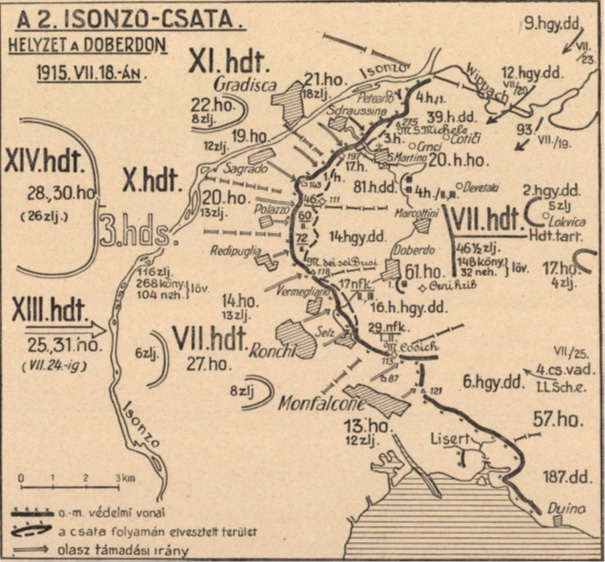
In defending the Italian attack, the 16th Brigade lost nearly half of its staff. For the self-sacrificing behavior during the defense, six sergeants of 17 and 29 also received gold medals for their valor. After the wounding or death of the superior officers, they took control of their squadrons and directed the counterattacks of their subunit. As a result of the second Battle of Isonzo, the Italian attack managed to achieve some territorial gain south of the village of San Martino, and between Polazzo and Redipuglia they managed to climb to the edge of the plateau, throwing the defenders back a few hundred meters. Defenders of the Karst Plateau suffered a total of about 40,000 casualties during the Italian attack. The attacking Italian troops are pretty much the same. The last photo was shot in the above mentioned positions at the edge of the plateu looking south towards the buildings of the Adria Werke, a factory that was abandoned in Monfalcone in May 1915.
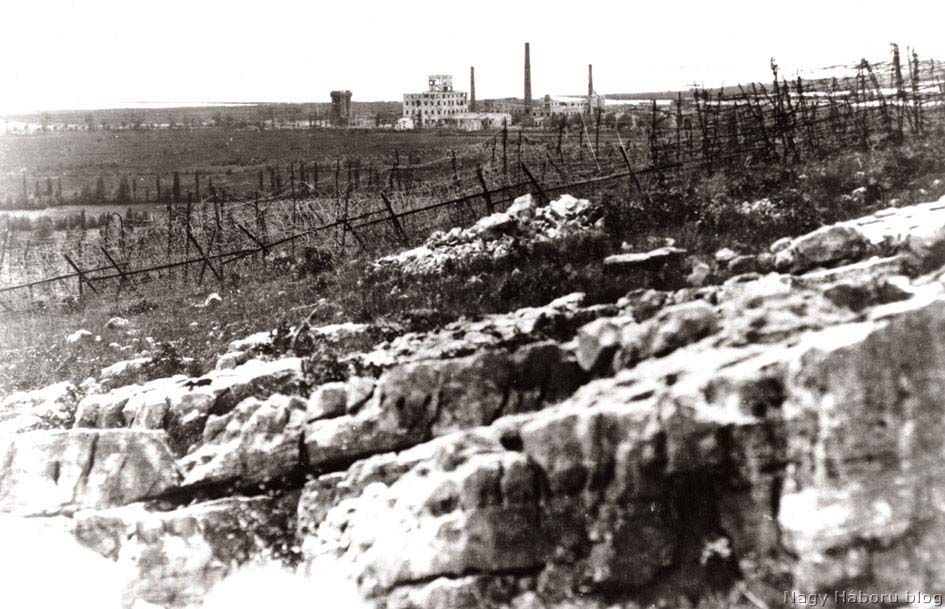

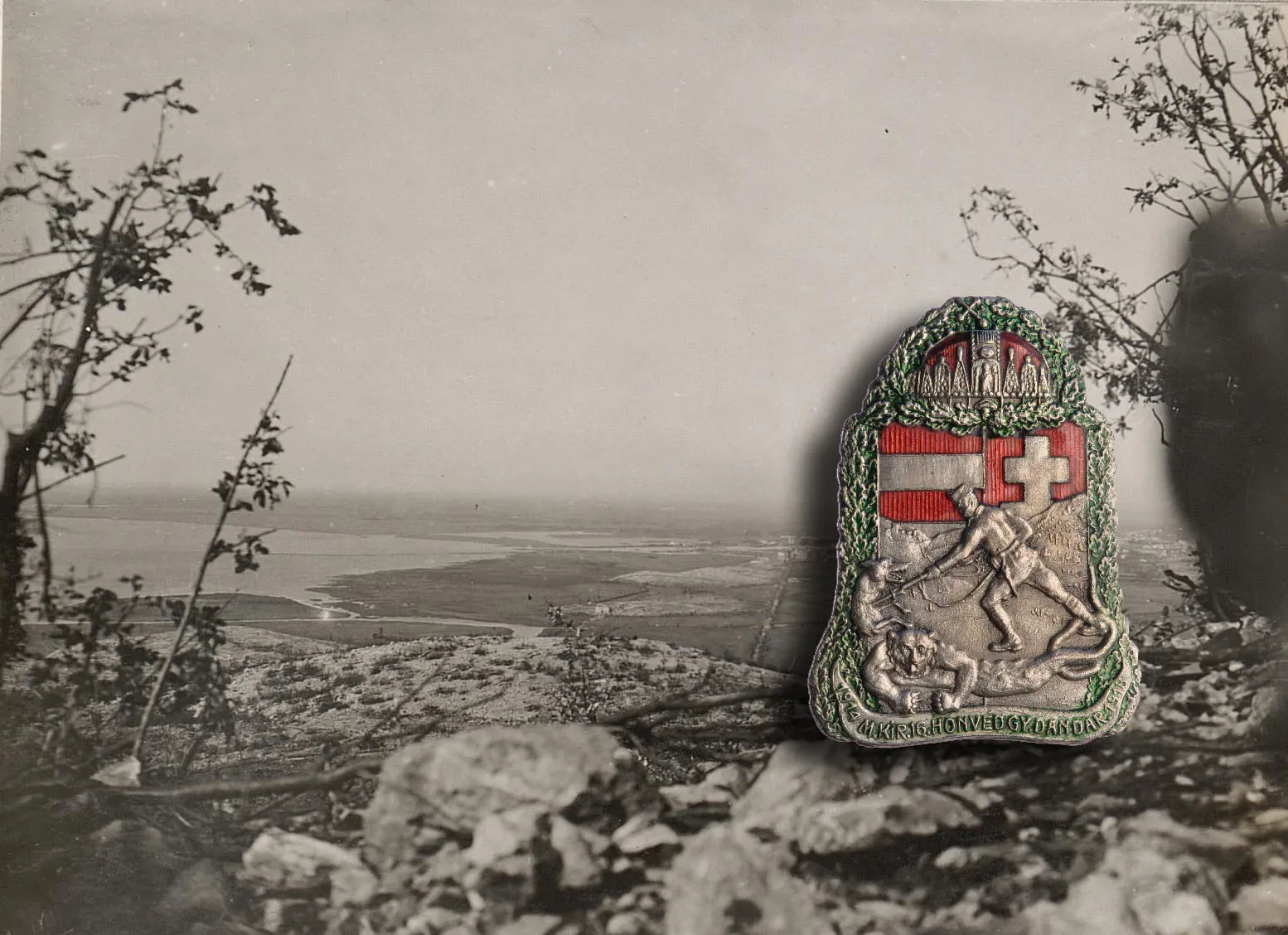
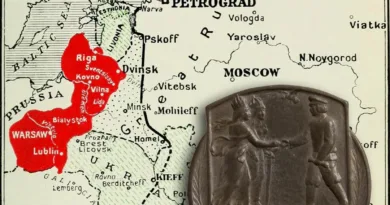
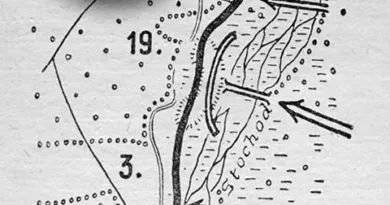
[…] The subject of this entry is the 16th Brigade, which included the 17th and 29th Insurgent Infantry Regiments of Székesfehérvár and Budapest. I write the 16th Brigade because, interestingly, the name of this formation changed several times during the Great War. It was formed as a mountain brigade, but in my opinion, the name did not refer so much to the special mountain training of these types of units. Rather, after formation, the brigade, along with the 10th Mountain Brigade, was classified in the 61st Division. They did not even fight in high mountain conditions, but immediately were sent to the Italian front on the Karst plateau near Mt dei sei Busi. […]